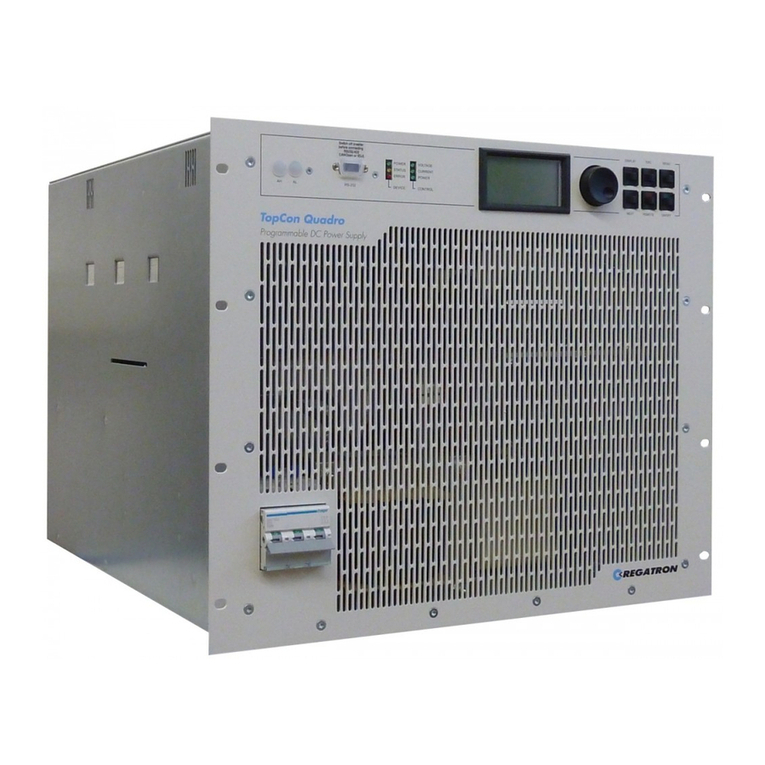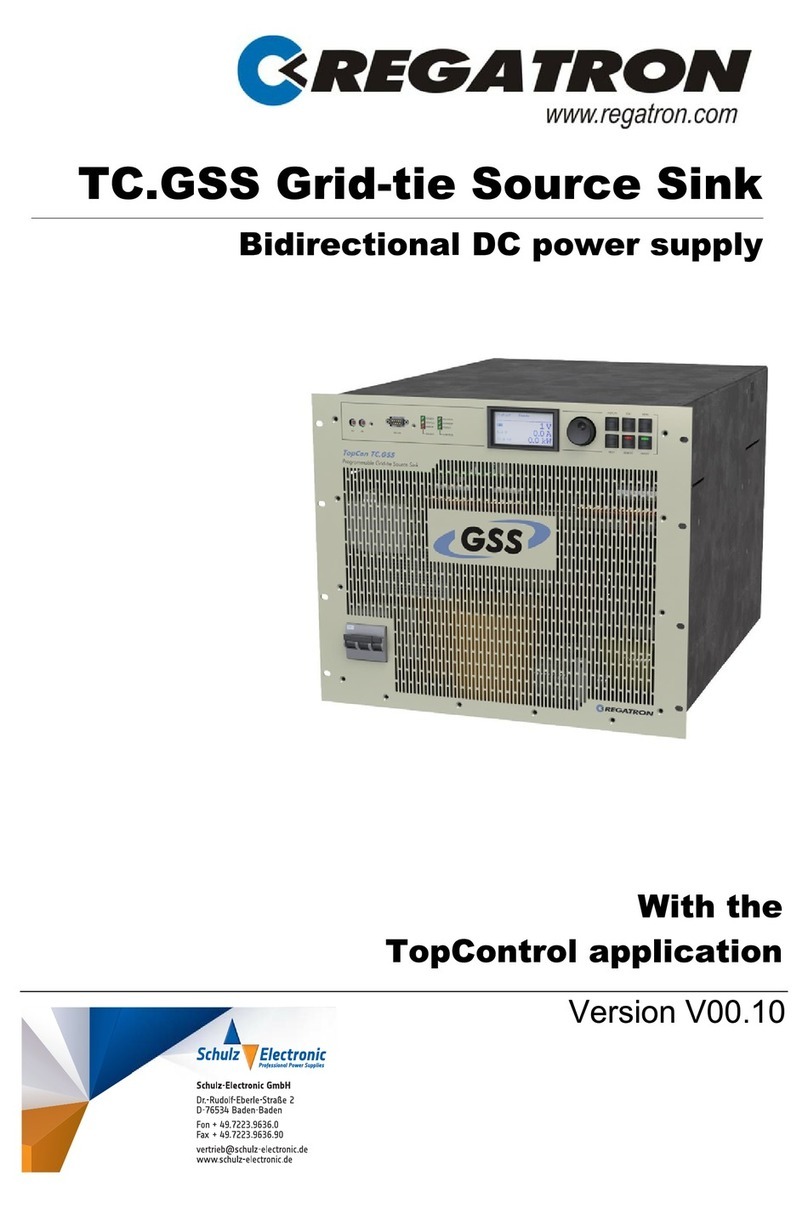
Table of Contents
REGATRON Performance. Precision. Quality. TC.ACS - Device Manual (V04.60) - 26.4.2022 3 / 66
1 General Safety Information . . . . . . . . . . . . . . . . . . . . . . . . . . . . . . . . . . . . . . . . . . . . . . . . . . . . . . . . . 8
1.1 Warning and Mandatory Symbols . . . . . . . . . . . . . . . . . . . . . . . . . . . . . . . . . . . . . . . . . . . . . . . . . . . . . . . . . . . . . . .8
1.2 Ordinances and Regulations . . . . . . . . . . . . . . . . . . . . . . . . . . . . . . . . . . . . . . . . . . . . . . . . . . . . . . . . . . . . . . . . . . . .9
1.3 Categorization of the hazard Areas . . . . . . . . . . . . . . . . . . . . . . . . . . . . . . . . . . . . . . . . . . . . . . . . . . . . . . . . . . . . . . .9
1.3.1 Personnel Area ........................................................................................................................................... 10
1.3.1.1 Electric shock ....................................................................................................................................................... 10
1.3.1.2 Electrical Heating ................................................................................................................................................. 11
1.3.1.3 Arcing and sparking on opening Contacts ........................................................................................................... 11
1.3.1.4 Mechanical Injury ................................................................................................................................................ 11
1.3.1.5 Chemical Injury .................................................................................................................................................... 11
1.3.2 Systems and Material Area ........................................................................................................................ 12
1.3.2.1 Fire ....................................................................................................................................................................... 12
1.3.2.2 Electromagnetic Fields ........................................................................................................................................ 12
1.3.2.3 Noise and Noise Level .......................................................................................................................................... 12
1.3.2.4 Mechanical Damage ............................................................................................................................................ 12
1.3.2.5 Handling Storage Systems containing large Amounts of Energy ......................................................................... 13
1.3.3 Mains Connection Area ............................................................................................................................. 13
1.3.4 Surrounding Area ....................................................................................................................................... 13
1.3.5 Area related to Interaction with the Device .............................................................................................. 13
2 Introduction . . . . . . . . . . . . . . . . . . . . . . . . . . . . . . . . . . . . . . . . . . . . . . . . . . . . . . . . . . . . . . . . . . . . . 14
2.1 Range of Application . . . . . . . . . . . . . . . . . . . . . . . . . . . . . . . . . . . . . . . . . . . . . . . . . . . . . . . . . . . . . . . . . . . . . . . . . .14
2.1.1 Waveform Generator Mode ...................................................................................................................... 14
2.1.1.1 Basic Waveform Generator Mode ....................................................................................................................... 14
2.1.1.2 Full Waveform Generator Mode (Option) ........................................................................................................... 14
2.1.2 Amplifier Mode .......................................................................................................................................... 14
2.1.3 Load Simulation Mode (Option) ................................................................................................................ 15
2.1.4 4-Quadrant Operation ............................................................................................................................... 15
2.1.4.1 Feeding Mode (positive Power) .......................................................................................................................... 15
2.1.4.2 Regenerative Mode (negative Power) ................................................................................................................. 15
2.2 Control Interface . . . . . . . . . . . . . . . . . . . . . . . . . . . . . . . . . . . . . . . . . . . . . . . . . . . . . . . . . . . . . . . . . . . . . . . . . . . . .15
2.3 Model Identifier . . . . . . . . . . . . . . . . . . . . . . . . . . . . . . . . . . . . . . . . . . . . . . . . . . . . . . . . . . . . . . . . . . . . . . . . . . . . .16
3 Interfaces, Controls and Displays . . . . . . . . . . . . . . . . . . . . . . . . . . . . . . . . . . . . . . . . . . . . . . . . . . . 17
3.1 Interfaces, Controls and Displays on the Front Side . . . . . . . . . . . . . . . . . . . . . . . . . . . . . . . . . . . . . . . . . . . . . . . .17
3.1.1 Overview .................................................................................................................................................... 17
3.1.2 LED Indications and their Meanings .......................................................................................................... 18
3.2 Interfaces on the Rear Side . . . . . . . . . . . . . . . . . . . . . . . . . . . . . . . . . . . . . . . . . . . . . . . . . . . . . . . . . . . . . . . . . . . .19






























